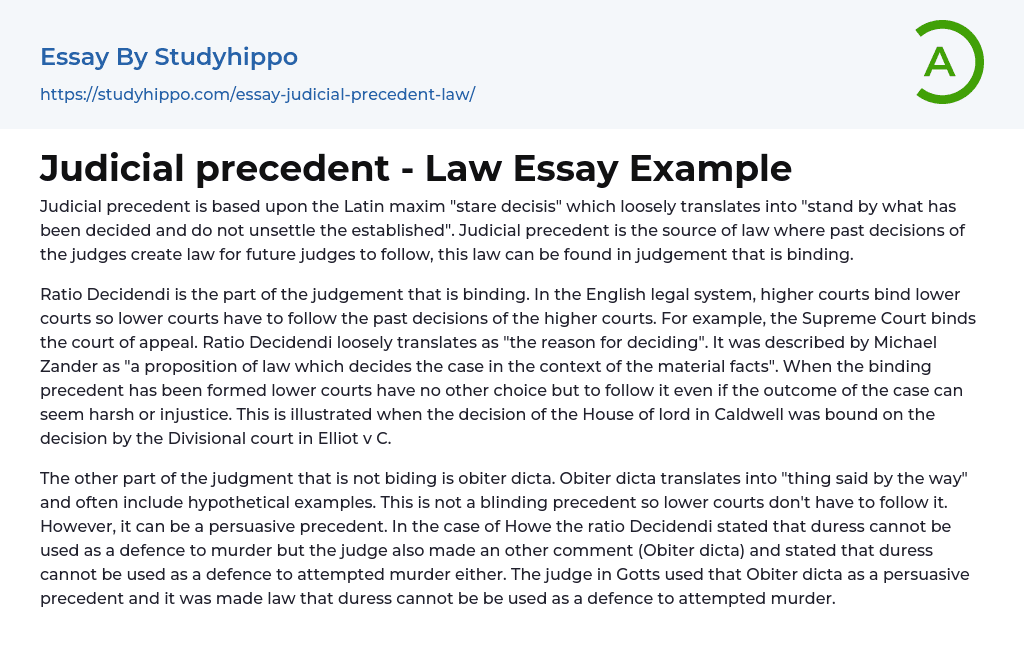Judicial precedent, derived from the Latin maxim "stare decisis" meaning "stand by what has been decided and do not unsettle the established," serves as the foundation of law. It involves the creation of legal principles for future judges to abide by through previous judicial rulings, which are considered binding judgments.
Ratio Decidendi, the binding part of a judgement, plays a crucial role in the English legal system. Higher courts hold authority over lower courts, requiring them to adhere to previous decisions. The Supreme Court, for instance, binds the court of appeal. Translating to "the reason for deciding," Ratio Decidendi is defined as a proposition of law that determines a case based on relevant facts. Lower courts are obliged to comply with binding precedents, even if the resul
...ting outcome appears harsh or unjust. This is exemplified by the House of Lords' decision in Caldwell, which was binding on the Divisional court's ruling in Elliot v C.
The part of the judgment that is not binding is called obiter dicta, which means "thing said by the way." It often includes hypothetical examples and does not create a precedent that lower courts must follow. However, it can be a persuasive precedent. In the case of Howe, the ratio decidendi stated that duress cannot be used as a defense to murder. Additionally, the judge made an obiter dicta comment, stating that duress also cannot be used as a defense to attempted murder. In the case of Gotts, this obiter dicta was used as a persuasive precedent, resulting in the establishment of a law that duress cannot be used as a defense to attempted murder.
- Federal government essays
- Armed Forces essays
- Confederate States Of America essays
- Federal Government Of The United States essays
- Fourteenth Amendment To The United States Constitution essays
- Governance essays
- Parliament essays
- Politics essays
- Jurisdiction essays
- Bureaucracy essays
- Separation Of Powers essays
- Congress essays
- President essays
- United States Congress essays
- Non-Commissioned Officer essays
- Appeal essays
- Revenge essays
- Corporate Governance essays
- Public Service essays
- Income Tax essays
- Supply essays
- Red Cross essays
- Democracy essays
- State essays
- Liberty essays
- Absolutism essays
- Reform essays
- Republic essays
- John Marshall essays
- Bourgeoisie essays
- Developed Country essays
- Elections essays
- International Relations essays
- Left-Wing Politics essays
- Monarchy essays
- Political Corruption essays
- Political Party essays
- Political Science essays
- Sovereign State essays
- United Nations essays
- World Trade Organization essays
- Contras essays
- Dictatorship essays
- Foreign policy essays
- Monarch essays
- Corruption essays
- Foreign essays
- Democratic Party essays
- European Union essays
- President Of The United States essays




